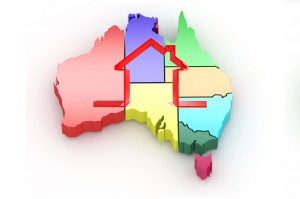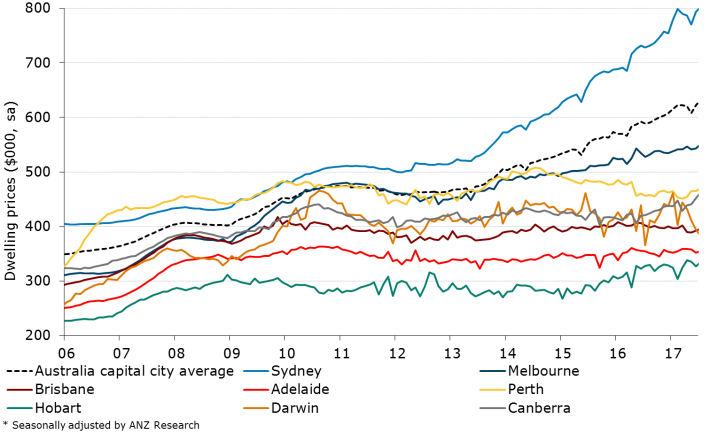Australia’s economic fortunes have improved according to the ANZ Bank’s most recent Stateometer – it’s quarterly assessment of the economic state of our States. 
As housing construction keeps economies humming in the south east, resources construction in the west and north comes close to bottoming, and labour markets and trade improve nationwide, the ANZ Stateometer paints a picture of an economy moving closer to its trend rate in the June quarter.
Today we look at their finding for the Tasmanian economy which has re-emerged with higher momentum and the ANZ Stateometer suggests above-trend growth in for the June quarter.
The main contributor to the Tasmanian index this quarter was an improved labour market; while trade remained positive.
Meanwhile, the household sector and housing continue to weigh on the index, but by less than in the March quarter.
Figure 1. ANZ Stateometer index – Tasmania
COMING FROM BEHIND
A number of economic indicators suggest Tasmania’s economy has found some renewed momentum.
Employment growth at 4% over the year to July was the highest in around two-and-a-half years.
The labour force participation rate at 61.2% was also the highest in over that period suggesting more Tasmanians have become engaged in the labour market due to improved job opportunities.
Figure 2. Tasmania investment
BUSINESS INVESTMENT FLAT, DESPITE LOWER AUD
Business confidence has fluctuated over the past year or two, but overall trended higher since the end of 2011 when the AUD started to depreciate.
Regardless, and despite evidence of a stronger labour market, there is little evidence that business investment is picking up.
New high profile accommodation projects in the state’s tourism sector, seem to be the exception rather the rule.
Figure 3. Employment, Tasmania vs Australia
AFFORDABILITY ON SIDE, BUT NOT POPULATION
Hobart dwelling prices recorded a sturdy increase of 6.8% over the year to June, but still Hobart remains the most affordable state capital in which to buy a house in Australia.
The average dwelling price is half the average Canberra dwelling price and one third of that in Sydney. 
Unlike its northern neighbours, record low interest rates have not propelled housing construction higher.
Dwelling approvals in Tasmania are below the levels recorded in the state more than ten years ago.
The most recent population data (to December 2016) – in line with this sluggish demand scenario – suggest a small positive net interstate migration flow but new residents are not being attracted to the state in significant numbers.
Tasmania’s share of the national population is steady at 2.1% and has been trending lower for several decades.
Figure 4. State capitals house price index
FARM CONDITIONS A POSITIVE
The state is more dependent on agriculture than any other state or territory, and Tasmania’s Treasury noted in its recent budget that high prices and favourable weather conditions were assisting the sector.
However, exports are not expected to maintain the very strong growth of 2015- 16.
You may be interested in…
- How’s the NS W economy
- How’s is QLD economy
- How’s the VIC economy
- How’s the WA economy
- How’s the SA economy
- How’s the ACT economy
- How’s the NT economy
from Property UpdateProperty Update https://propertyupdate.com.au/tasmania-economy-2017/





No comments:
Post a Comment